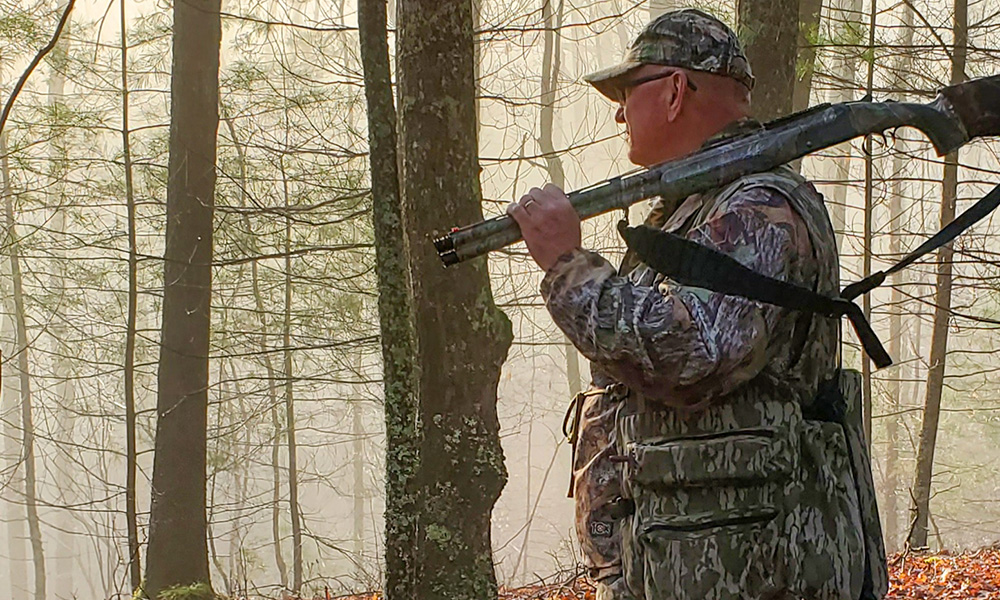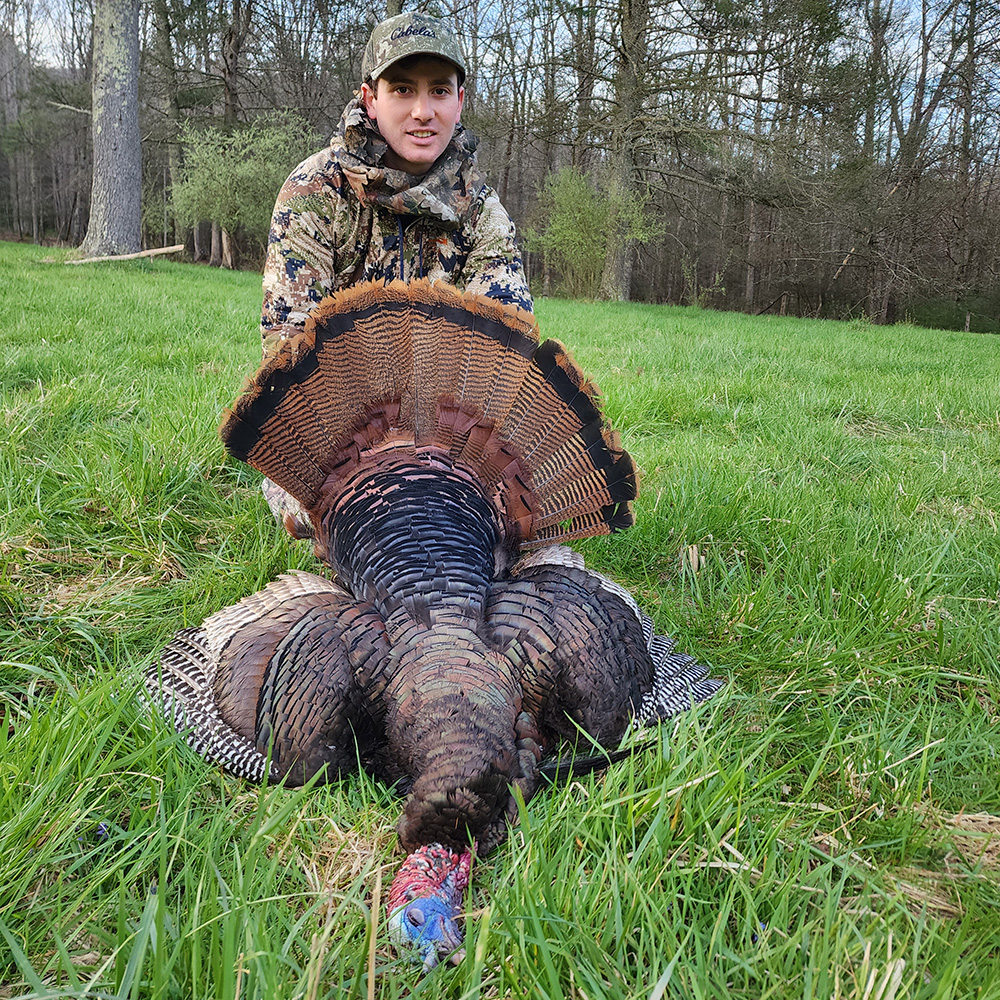
The American wild turkey is the king of our game birds. No other bird has captured the imagination of as many hunters as Meleagris gallopavo. This bird has spawned an entire culture of hunters (some would say a cult) that lives and breathes the hunting of this eccentric fowl. Wildlife biologists recognize five subspecies of the wild turkey in America, but the one that gets the most attention and is by far the most cussed and discussed is the Eastern.
Turkey hunter literature and lore has raised the Eastern turkey to something just shy of an omnipresent being. Turkey hunters like to talk about wise old gobblers eluding them with tricks that could only be described as supernatural, running toward them gobbling every breath and then disappearing without a trace. Turkey hunters usually don’t agree on very much, but most recognize that in areas where they are hunted (which is almost everywhere) the Eastern turkey is by far the hardest to kill.
The Bad Old Days and a New Start
By the early 1900s the Eastern wild turkey had been wiped out of most of its range. Large scale timbering bringing on habitat loss, unregulated hunting and market hunting reduced the flocks to an all-time low. This dearth of turkeys continued up through the 1950s when conservation programs funded federally by the Pittman Robertson Act started to be put into place by state fish and game agencies. By the 1970s, state conservation departments were receiving help from the National Wild Turkey Federation with funding for habitat management and restoration.
While improving habitat was very important, possibly the greatest factor in reestablishing flocks of Easterns across the country was the use of a device called the canon net. Several states tried releasing pen-raised turkeys with little or no success. Managers knew the only way to put turkeys into areas that had none was to catch and move turkeys born in the wild. The cannon net employed a system of multiple pipes loaded with lead weights similar to a mortar or cannon. The weights were attached to large nets and could be fired simultaneously, shooting the net over an entire flock of turkeys. This allowed wildlife managers to move several turkeys at once to an area that had been devoid of their presence. Along with the accompanying habitat and conservation efforts, this trap-and-transplant program quickly began to reestablish wild turkeys east of the Big Muddy.

Status of the Eastern Today
While it is true that the Eastern turkey enjoyed a population explosion in many areas through the 1980s and well into the 1990s, many states are now experiencing a decline in numbers. The reasons for this seem to be unclear at present, and wildlife biologists all over the country are studying the problem. A steep rise in predator populations is always noted—raccoons, opossums and skunks are notorious nest raiders and with fur prices at an all-time low there is very little interest in trapping for these animals. The Eastern coyote gets its share of blame as a predator, and there are plenty of hawks and owls in most areas that prey on turkeys. Like rabbits, everything eats a turkey. A far more insidious factor that biologists are looking into is the possibility of diseases like the West Nile virus and others causing a decline in numbers.
Several states have altered or reduced the hunting seasons for turkeys in a first attempt to address this problem, but for now, thankfully, all states in the East are holding huntable numbers of wild turkeys.
Hunting the Confounding Eastern Turkey
Tom Kelly, considered by many the greatest author on the wild turkey, once called them “an unusual bird”. (If you are a turkey hunter and don’t know who Tom Kelly is, you need to change that.) The Eastern wild turkey certainly fits this description. This is a bird with a brain the size of medium peanut that routinely outwits thousands of hunters every year.
This bird will one minute stand beside a country road and regard you with little concern or fear and the next day in a hunting situation will spook and run like hell if you move your gun barrel one inch. The Eastern turkey has eyesight at least eight times better than a human (one old turkey hunter said a turkey can see through a thin rock) and is very, very aware of movement. Its hearing is, if anything, even more acute. Wild turkeys are known for the ability to pinpoint the source of a sound to within a foot or two. Remember this when hunting: If you make a call and the gobbler hears you he knows exactly where you are.

So why is the Eastern turkey so hard to kill sometimes? The short answer is they have been hunted since before the first settlers appeared in the Appalachian Mountains. The true original strain of the wild turkey, with red legs and slim body shape, was never eradicated from some remote areas. These turkeys were often the birds early managers had to find and catch in those early trap-and-transplant programs, and they passed on their wariness and acute sense of survival.
In general, Eastern hunters are confronted with two situations, woods turkeys and field turkeys.
Woods turkeys: Some hunters believe a wild turkey should naturally be in the woods, not in an open field, and would rather hunt them there. For the run-and-gun hunter (not sitting in an enclosed blind) the deep-woods scenario can be very challenging and exhilarating. Learning to sit still may be the greatest asset to any turkey hunter. Good camouflage helps, but you can be camoed head to toe and if you move your head or wiggle your shotgun barrel the gobbler will be gone with the wind.
If you can, a good way to start is get as close as possible to the gobbler while he is on the roost. Damp leaves and a turkey that will gobble while it is still fairly dark helps with this. You may be able to use the terrain to get really close. If you set up within 100 yards or less, when the turkey flies down he may be in shotgun range when he hits the ground. Less is often better than more when calling, especially with pressured turkeys on public land. If you call once and the turkey answers, he knows you are there, shut up and don’t call for a while.
Patience is your best weapon for wary Eastern turkeys. The turkey that walks away from you with an occasional gobble at 7:30 in the morning may very well circle back in an hour or two. Unless you have a hotter turkey to go to, sit tight and be ready, as he may show up silent and not say a word.
Field turkeys: Volumes have been written on the dreaded field turkey and the frustration it can cause the average hunter. Eastern turkeys often gravitate toward an open field during the course of their day. Hens like to pick for food in a field and gobblers follow the hens. Gobblers also seem to like strutting in an open field where they can be easily seen. In reality, a field turkey is just a turkey that walked out of the woods and into an open field, but most gobblers up their degree of stubbornness and become harder to lure into gun range when they enter a field.
A common scenario of the dreaded field turkey is a hunter encounters a gobbler in a large field, either with or without some hens, strutting back and forth and gobbling. The hunter may be able to creep to the edge of the field to observe and call to this turkey (field turkeys often bring on a lot of crawling on your belly), but usually you cannot budge him from his established strut zone. Often when the hens leave the field, the gobbler follows and you are left lying there wondering about how many ticks you have acquired.
The advent and use of turkey decoys and the ground blind have probably been the best tools to come along to help with field turkeys (along with TSS shot for extended range). I have seen turkeys run the opposite direction when shown a decoy, but in general they will usually help to lure in a field turkey. A ground blind set up in advance with a few decoys is how many turkey hunters deal with the dreaded field turkey these days.



































